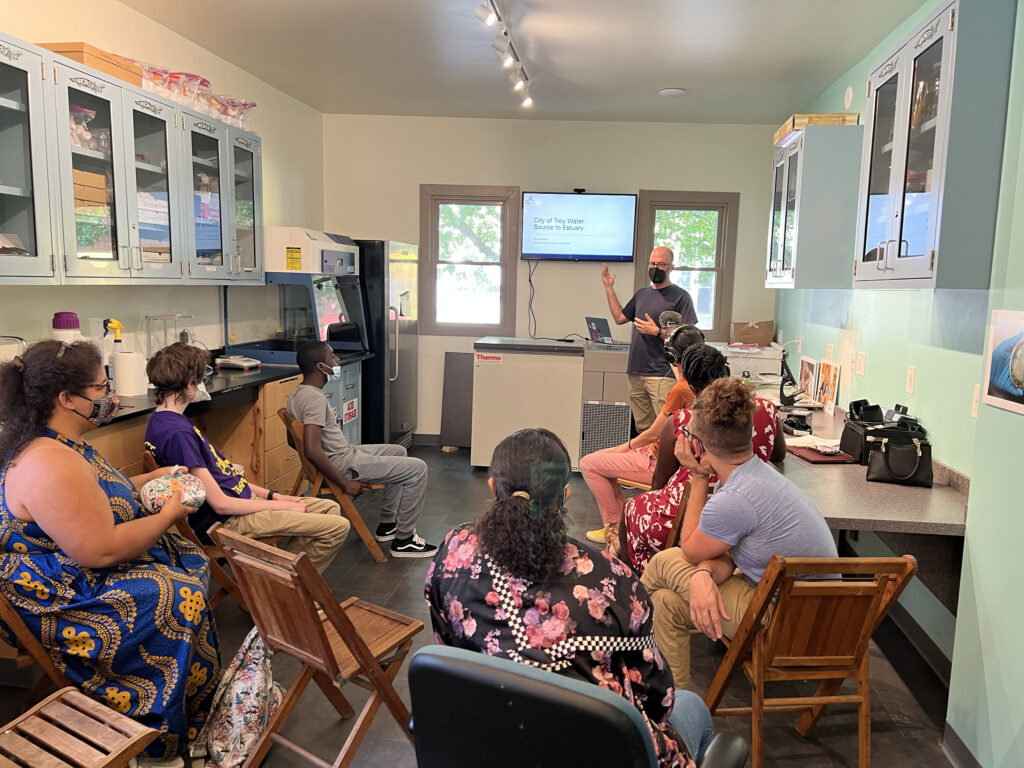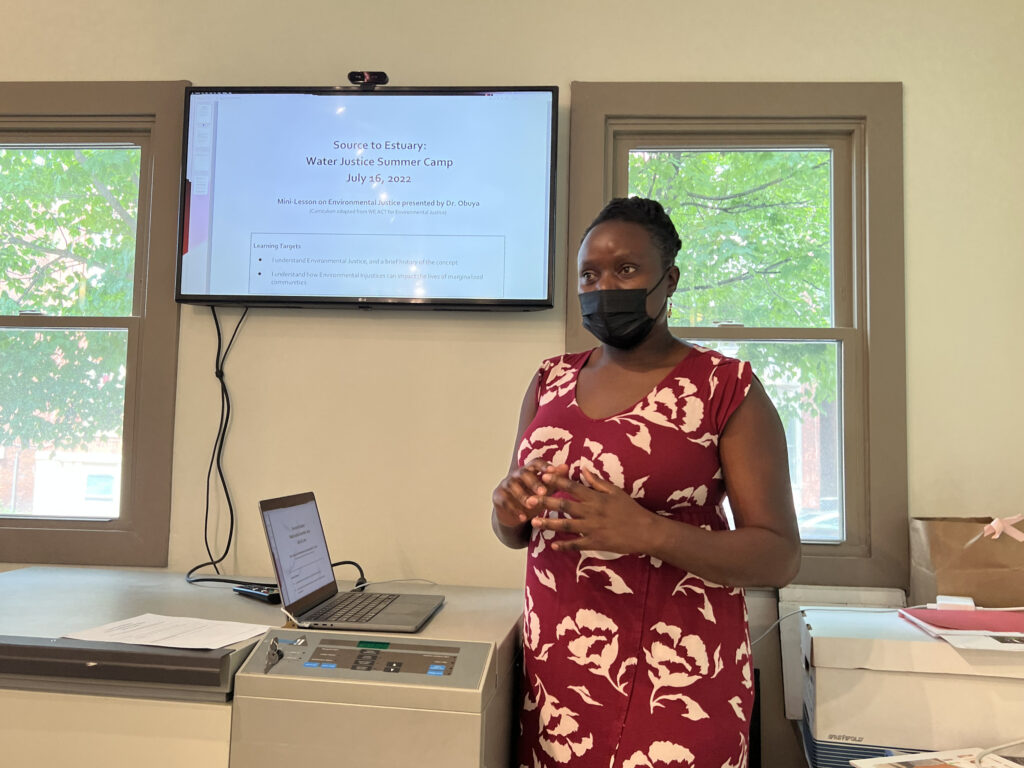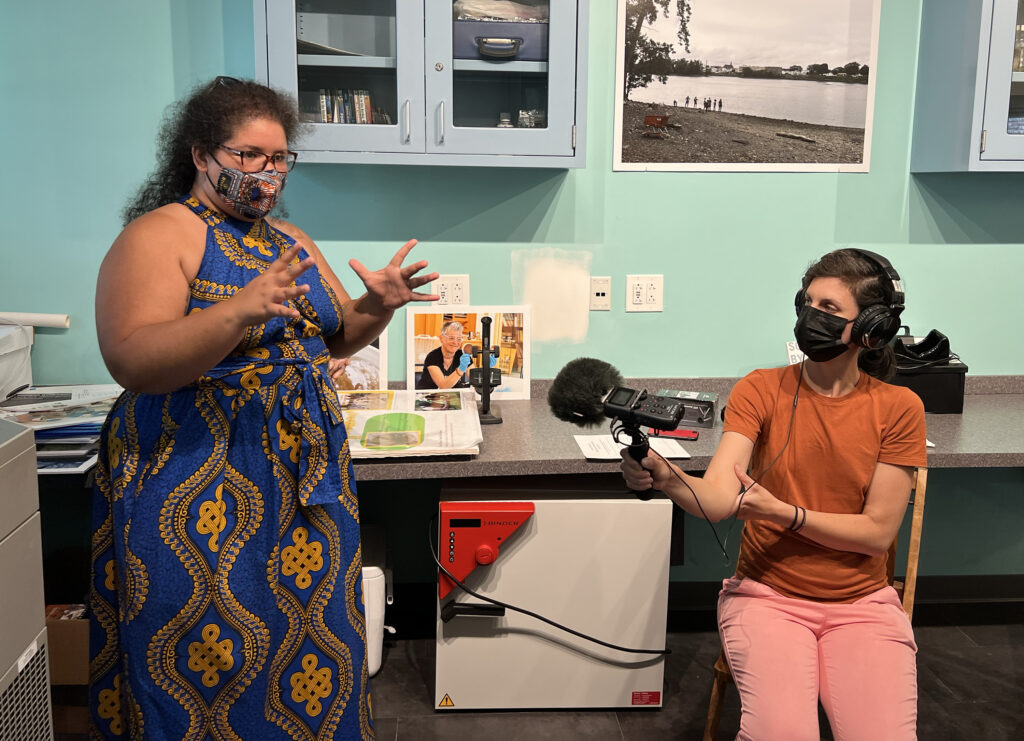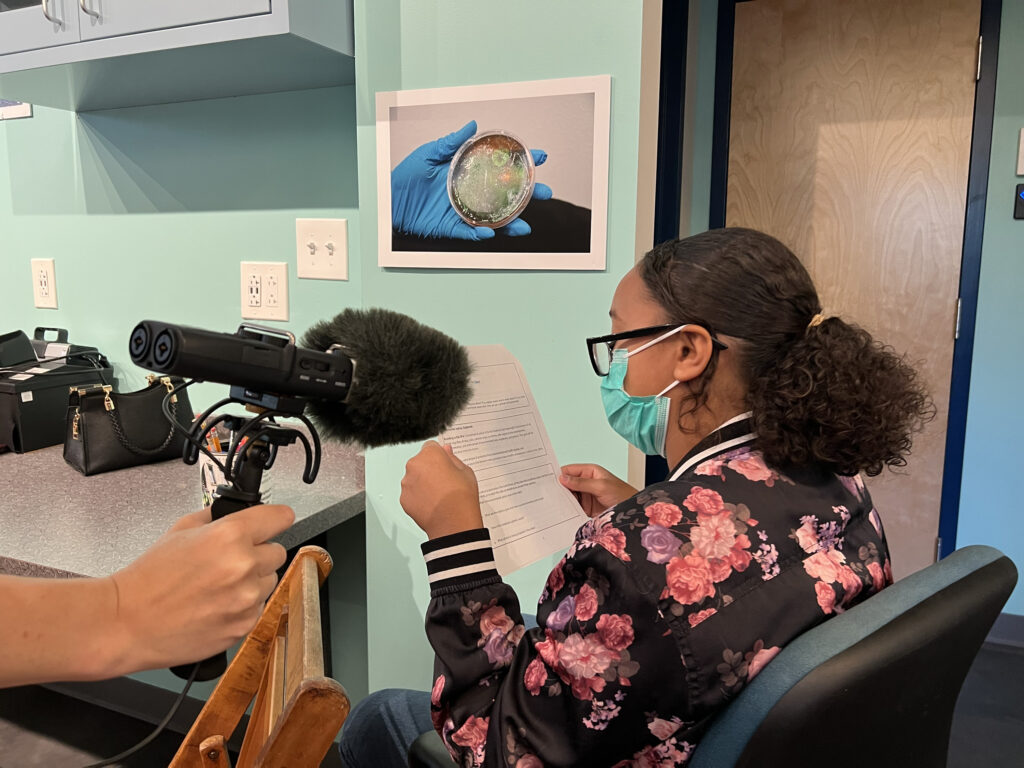On July 6, 2022, for the kick-off of Source to Estuary: Water Justice Summer Camp, youth fellows gathered at NATURE Lab to meet and learn from Dan Shapley of River Keeper, Emilly Obuya of Sage College, and Megan Lung of the DEC.

Dan, who leads Riverkeeper’s Water Quality Program, helped us get physically and geographically oriented with a presentation on our local watershed and drinking water protection. He likened our massive Hudson River Watershed to a network of veins inside a body, and described how anything that touches that network upstream can impact water quality downstream. While we’re lucky to have a relatively good source of drinking water in Troy, which brings water in from the Tomhannock Reservoir fifteen miles northeast of the city, local water quality in the Hudson is not good enough for either swimming or fishing, a fact our youth fellows are well-acquainted with through their monthly water testing efforts.

After Dan’s presentation, Emilly helped us make connections between environmental justice and our local habitat in North Central Troy and the wider Capital Region. Working from an environmental justice mini-lesson, she began by asking fellows to name and describe places in their neighborhoods that impacted their health and wellness, then used a case study around air pollution in Hunts Point in the South Bronx to define and articulate systemic racism and its connections to environmental justice struggles. We were able to draw connections between the lack of swimmable water in the Hudson around the Capital Region and inequitable access to recreation in Troy.

Megan followed up with a brief discussion and a screening of a new video just released by the DEC about stream health and dam removal, which helped us think about the closely intertwined needs of humans and nonhumans when it comes to obstructions in our waterways like dams and culverts. We’re excited to spend time exploring a dam removal site on the Wynantskill in South Troy with Megan later in the course.

Finally, as we wrapped up our afternoon, the Sanctuary for Independent Media’s own Sina Basila Hickey, who runs our Hudson Mohawk Magazine Radio program, led a conversation on recording audio for radio stories. Youth fellows shared what makes radio stories compelling for them, and tried out the new zoom mic we’ll be using in the field. We’re excited to put these skills into practice as we record our reflections and experiences over the next seven weeks.
